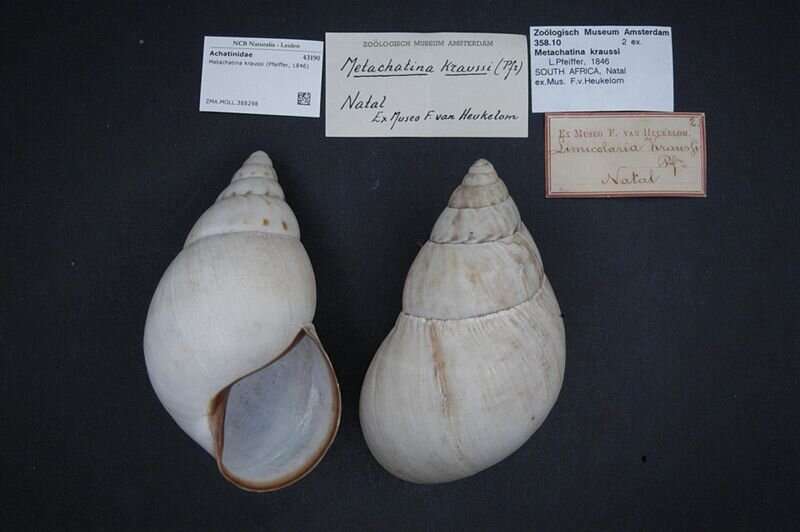April 6, 2023 report
This article has been reviewed according to Science X's editorial process and policies. Editors have highlighted the following attributes while ensuring the content's credibility:
fact-checked
peer-reviewed publication
trusted source
proofread
Humans hunted giant snails on the way to becoming an apex predator, suggests study

Humans are the ultimate apex predators on planet Earth. No matter how large-sized, sharp-toothed, razor-clawed, pointy-horned or venomous a creature may be, humans have hunted it for food. Moreover, according to a study led by the University of the Witwatersrand, they have also done so no matter how slow, small and slimy.
Giant African land snails (Achatinidae) were systematically brought to the Border Cave site in eastern South Africa, roasted and consumed, starting from 170,000 years ago, in a practice that continued for 100,000 years.
The Border Cave site is located on a cliff with an amazing view and is home to some of the oldest fossils found of anatomically modern humans. Intermittent human habitation of the cave from before 227,000 years ago to as recently as 600 years ago provides a unique window into the past across timeframes. Archaeologists have found some of the earliest evidence of symbolism here, as well as beads, tools, burials and the construction of grass beds.
The current study, published in Quaternary Science Reviews and titled "Evidence for large land snail cooking and consumption at Border Cave c. 170–70 ka ago. Implications for the evolution of human diet and social behaviour," offers a detailed examination of diet from fragments of land snail shells found across most of the history of the cave.
Snails are an excellent source of nutrients, are slow moving, easy to hunt and could have been stored alive in the cave for some time before being consumed, but they are safest to eat when cooked.
Previous work in the cave has revealed the burning of wood for cooking, warmth and protection against predators. The charcoal record also suggests that plant species may have been selected for their latex, nutritional value, and insecticidal, medicinal and cosmetic properties.
The fragments of shells were found in a variety of colors, from lustrous beige to brown and matte gray. Suspecting that the color variations could be from exposure to heat, the researchers tested modern giant land snail shell fragments with various time and temperature exposures. Color change, weight loss and shattering of samples were recorded.
Snail shells, comprising layers of aragonite, undergoes a mineralogical phase transition into calcite if subjected to substantial heating. The transformation of aragonite into calcite in the experimental shell heating was tracked with infrared and Raman spectroscopy. Scanning electron microscopy was also used to better identify heat-induced transformations as opposed to decomposition processes.
The results of the experiment led to the conclusion by researchers that giant African land snails were brought to the site by humans and roasted before consumption.
As the authors point out, consumption of land snails continues today in Spain, France, Italy, Portugal, Algeria, Morocco, Tunisia, Nepal, Southeast Asia and Northeast India, though these are likely reemergent practices as opposed to an unbroken trail of snail snacking from the earliest hunters.
More information: Marine Wojcieszak et al, Evidence for large land snail cooking and consumption at Border Cave c. 170–70 ka ago. Implications for the evolution of human diet and social behaviour, Quaternary Science Reviews (2023). DOI: 10.1016/j.quascirev.2023.108030
Journal information: Quaternary Science Reviews
© 2023 Science X Network





















